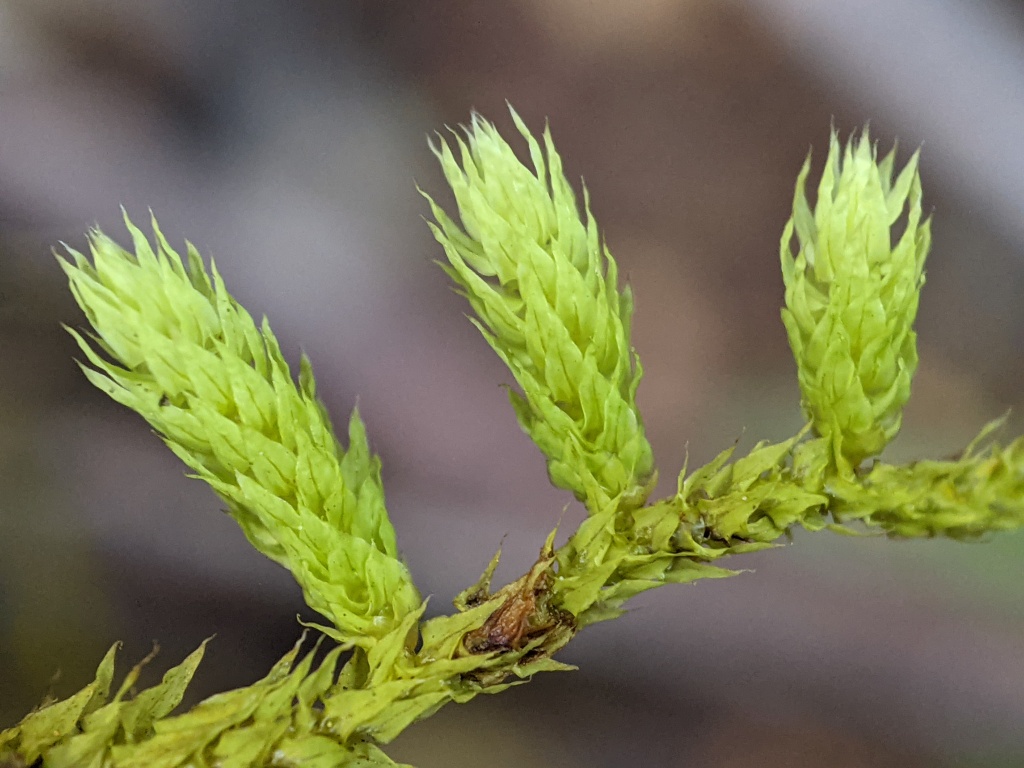Papillaria flavolimbata
(Müll.Hal. & Hampe) A.Jaeger- Ber. Thätigk. St. Gallischen Naturwiss. Ges.* 1875–76: 267 (1877)
Asexual reproduction by attenuate branch tip with caducous leaves. Plants light to dark green, lighter toward apices. Pendent stems to 10 cm long, irregularly pinnately branched; branches to 2 cm, attenuate. Stem leaves erect-spreading when moist, erect to erecto-spreading when dry, triangular to ovate-lanceolate, 2–2.6 (–3) mm long, 0.9–1.6 mm wide, not plicate; base auriculate, clasping; apex acuminate, sometimes minutely forked; costa extending 2/3–3/4 of leaf length or almost to apex; margins slightly denticulate in auricles, otherwise entire, undulate, strongly recurved at mid-leaf, with more elongate, linear, smooth cells forming a conspicuous border to 4/5 of leaf length; border 10–20 rows wide in auricles, otherwise, (2–) 3–4 rows wide; midlaminal cells and laminal cells in apical half rhomboidal to linear, (7–) 18–42 μm long, 4–8 μm wide, pluripapillose or with one papilla near apex; auricular cells linear to narrow rhomboid, pluripapillose, the long axis c. parallel to margin close to margin; laminal cells at base near costa long-rectangular, 10–37 μm long, 4–10 μm wide, usually smooth. Branch leaves with small auricles, otherwise similar to stem leaves, 1.4–2.2 (–3) mm long, 0.5–1.5 mm wide. Seta 7.5–12.6 mm long. Capsule ovoid, (1.6–) 2–2.5 mm long. Operculum 0.9–1.2 mm long.
VVP, VRiv, GipP, OtP, EGL, EGU, HSF, HNF, OtR, Strz, HFE, VAlp. In rainforest and wet sclerophyll forest in the Otways, Yarra Ranges, Strzelecki Ranges and East Gippsland with occasional records in the valleys of the Victorian Alps. Also QLD, NSW, ACT and Tas. New Zealand.
 Spinning
Spinningde Oliveira, J.R.P.M.; Quandt, D.; Newton, A.E.; Pôrto, K.C.; Luong, T.-T.; Huttunen, S. (2020). Systematic Revision of Papillaria (Meteoriaceae, Bryophyta). Systematic Botany 45(3): 411–438.
Streimann, H. (1992). Moss genus Papillaria (Meteoriaceae) in the Pacific. Journal of the Hattori Botanical Laboratory 71: 83–111.

